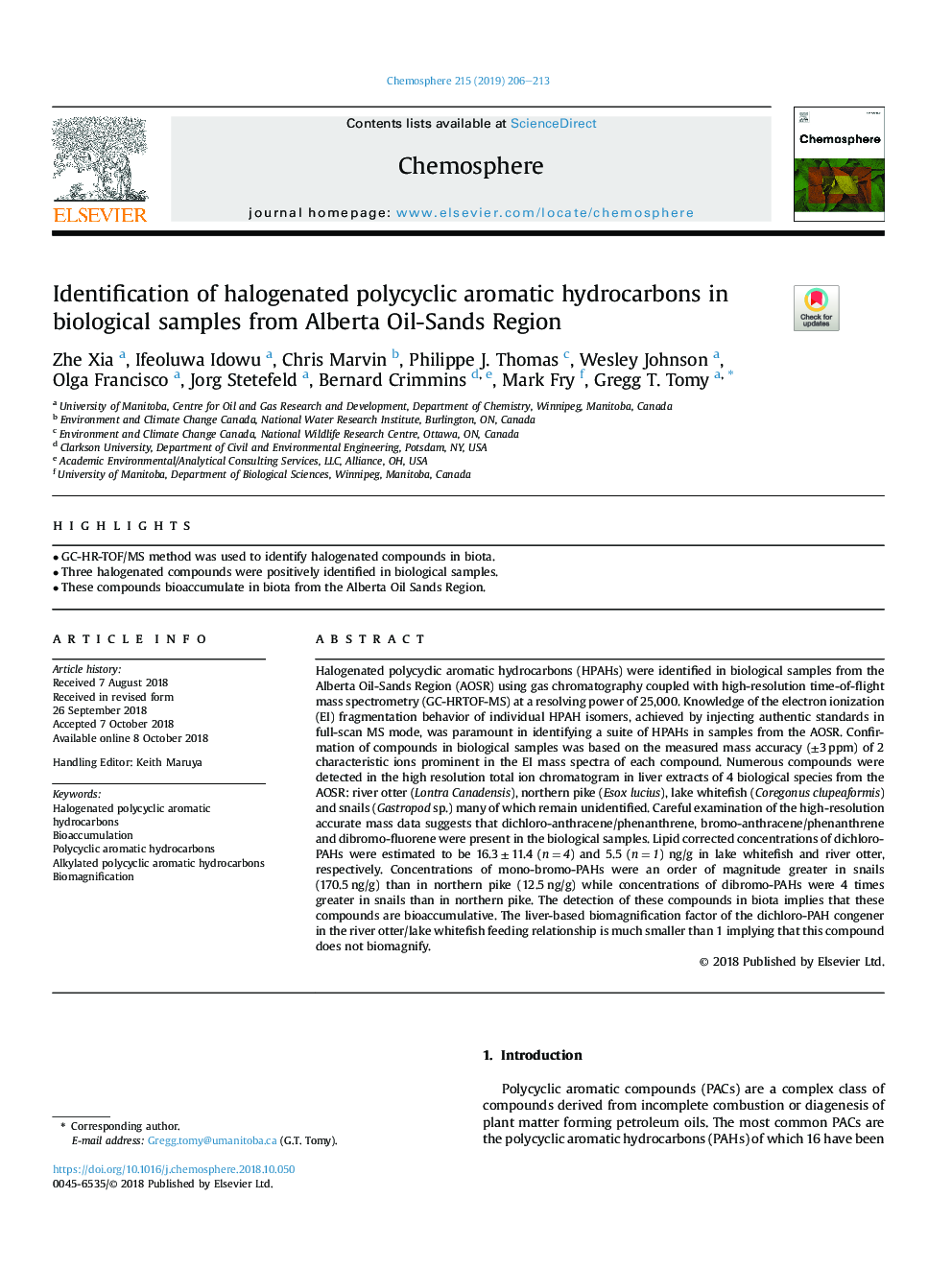| کد مقاله | کد نشریه | سال انتشار | مقاله انگلیسی | نسخه تمام متن |
|---|---|---|---|---|
| 11010200 | 1810986 | 2019 | 8 صفحه PDF | دانلود رایگان |
عنوان انگلیسی مقاله ISI
Identification of halogenated polycyclic aromatic hydrocarbons in biological samples from Alberta Oil-Sands Region
دانلود مقاله + سفارش ترجمه
دانلود مقاله ISI انگلیسی
رایگان برای ایرانیان
کلمات کلیدی
Bioaccumulation - ذخیره سازی بیولوژیکBiomagnification - زیست انباشتگی افزایشی، بزرگنمایی زیستیPolycyclic aromatic hydrocarbons - هیدروکربن آروماتیک چندحلقهایAlkylated polycyclic aromatic hydrocarbons - هیدروکربن های آروماتیک چند حلقه ای آلکیل شدهHalogenated polycyclic aromatic hydrocarbons - هیدروکربن های چند حلقه ای معطر هالوژنیک
موضوعات مرتبط
علوم زیستی و بیوفناوری
علوم محیط زیست
شیمی زیست محیطی
پیش نمایش صفحه اول مقاله

چکیده انگلیسی
Halogenated polycyclic aromatic hydrocarbons (HPAHs) were identified in biological samples from the Alberta Oil-Sands Region (AOSR) using gas chromatography coupled with high-resolution time-of-flight mass spectrometry (GC-HRTOF-MS) at a resolving power of 25,000. Knowledge of the electron ionization (EI) fragmentation behavior of individual HPAH isomers, achieved by injecting authentic standards in full-scan MS mode, was paramount in identifying a suite of HPAHs in samples from the AOSR. Confirmation of compounds in biological samples was based on the measured mass accuracy (±3â¯ppm) of 2 characteristic ions prominent in the EI mass spectra of each compound. Numerous compounds were detected in the high resolution total ion chromatogram in liver extracts of 4 biological species from the AOSR: river otter (Lontra Canadensis), northern pike (Esox lucius), lake whitefish (Coregonus clupeaformis) and snails (Gastropod sp.) many of which remain unidentified. Careful examination of the high-resolution accurate mass data suggests that dichloro-anthracene/phenanthrene, bromo-anthracene/phenanthrene and dibromo-fluorene were present in the biological samples. Lipid corrected concentrations of dichloro-PAHs were estimated to be 16.3â¯Â±â¯11.4 (nâ¯=â¯4) and 5.5 (nâ¯=â¯1) ng/g in lake whitefish and river otter, respectively. Concentrations of mono-bromo-PAHs were an order of magnitude greater in snails (170.5â¯ng/g) than in northern pike (12.5â¯ng/g) while concentrations of dibromo-PAHs were 4 times greater in snails than in northern pike. The detection of these compounds in biota implies that these compounds are bioaccumulative. The liver-based biomagnification factor of the dichloro-PAH congener in the river otter/lake whitefish feeding relationship is much smaller than 1 implying that this compound does not biomagnify.
ناشر
Database: Elsevier - ScienceDirect (ساینس دایرکت)
Journal: Chemosphere - Volume 215, January 2019, Pages 206-213
Journal: Chemosphere - Volume 215, January 2019, Pages 206-213
نویسندگان
Zhe Xia, Ifeoluwa Idowu, Chris Marvin, Philippe J. Thomas, Wesley Johnson, Olga Francisco, Jorg Stetefeld, Bernard Crimmins, Mark Fry, Gregg T. Tomy,